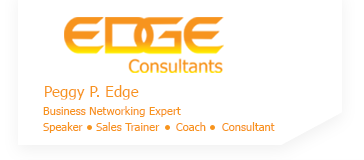Networking: Connecting Through Social Media

Face-to-face networking has been the primary way for sales executives to connect with potential buyers for many years. Some of us are still a little slow to embrace social media to it’s fullest as a means to grow our business.
I will be the first to admit that I’m still a neophyte at networking but I work on it every day. Folks, social media is here to stay and we might as well roll up our sleeves, cinch up our belt and get savvy at one more way to make connections so that we are able to seize opportunities.
To improve your overall lead generation effectiveness, here are a few tips on how to improve with social media:
- Make sure that all of your social media profiles say the same thing.
- Give yourself a title that is descriptive of what you do. For example, I do several things–Business Networking Expert, Speaker, Author, and Industrial Packaging Specialist. List what you do as your Title, not the position that you hold within your company.
- Create a Summary of who you are and what products or services provided. Again, make sure they are consistent over all of your media.
- Write a short statement, one paragraph, about each job that you have held.
- Toot your own horn by including all Awards and Honors that you have accumulated over the years. People truly read this stuff when they are checking you out.
- List all continuing education or self-improvement coursework that you have taken.
- Connect periodically with your tribe to let them know you are still alive and kicking.
- Write short, to-the-point, articles or 1-2 sentence posts on your social media.
- Comment on posts by others. This will draw more attention to you and what you are up to.
- Join groups in your industry or in industries that you want to penetrate as clients
Other places where you can connect with me include: Facebook Business Page: https://www.facebook.com/PeggyEdgeFanPage; Twitter: ttps://twitter.com/PeggyEdge
Peggy P. Edge (c) 2015
Networking: Have a plan
 Networking: Your results are directly proportional to the effort you put in–have a plan.
Networking: Your results are directly proportional to the effort you put in–have a plan.
Networking is work. Really! If you expect to reap maximum benefits from attending and joining a networking organization, it requires more than just showing up, passing out as many business cards as possible and collecting cards from fellow attendees.
To be effective, you must start with a strategic networking plan which boils down to being a part of your overall marketing-sales plan for the year.
To develop your networking roadmap, first you will need to evaluate what you overall objective will be. A few questions that will help you determine your expected outcome includes:
- What is my reason for networking? Write down as many criteria that you can identify.
- Make synergy partner connections?
- Find more qualified prospects?
- A need to find educational opportunities?
- What groups fit my ideal networking profile?
- Are the members of the same professional level or higher up than I am?
- Do the industries represented fit my need for a prospective client base?
- Are the membership maintenance requirements conducive to my schedule?
- What will be expected of me as an active member?
- What alternatives are available if I am unable to be in attendance?
- What do I have to bring to the table?
- Will my leadership talents, mentoring expertise be of use to the leadership team or other members.
- Will I have leadership opportunities?
- What is the overall Return on Investment (ROI) for membership in the group?
- What are the hard costs of membership? Dues: national/local, meals, etc.
- What will it cost me in time commitment? Time to get back and forth to the meetings, length of the meetings, time to participate in any additional extracurricular activities associated with membership of the organization.
- Are there any hidden hard or soft costs associated with involvement as a member?
These are only a few questions that you should be asking yourself as you evaluate the usefulness of a prospective networking group.
Once you have identified not only the details and expectations of joining a networking group but also all of the hard and soft costs of membership, then you are ready to start shopping around to see if there is a local group that fits your requirements.
Next, attend numerous groups as well as several meetings of each group before you make a final decision to join. Interview several of the members to see what their ROI has been. Offer to buy the leadership a cup of coffee to explore how you would fit into the organization.
Finally, when you have conducted all of your research, then you will be ready to make an informed decision as to which group is a good fit for you. After you have made your final decision, re-evaluate your ROI every quarter to make sure you are still meeting the original objectives of your networking plan.
Peggy P. Edge © 2016
Networking: Conveying your Who-What-Why
When you give your 30-Second Commercial at a networking event, do you just stand up, open your mouth and hope the right words to come out? You are shooting yourself in the foot unless you plan in advance what you are going to say. Developing a good elevator speech requires some forethought.
A well-crafted commercial will answer 3 questions: Who, What, and Why.
- Who are your clients or prospects? Be specific with the levels of management that you call on as well as the industry niche that you work within or are expecting to break into. Example: I work with______________.
- What the products and services that you offer? Highlight only 1 product or service at a time. Remember you only have 30-seconds. Example: I provide ________.
- Why should I listen to what you have to say? Your Value Proposition explains why your product or service is important. Example: Because or So that_________.
To improve your presentation, write the answer to all of these questions and fill in the blank. Next, get in front of a mirror and practice-practice-practice.

Peggy P. Edge (c) 2014



